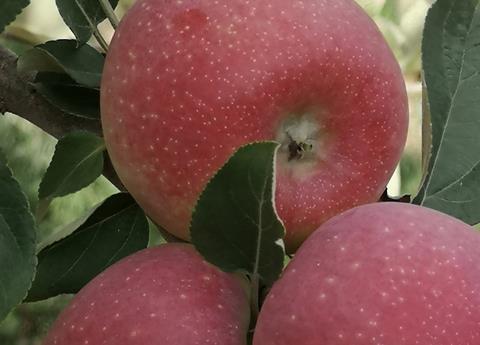As the first hot climate apple varieties are tested in South Africa, Culdevco says the low-chill varieties are doing well
Apple varieties in South Africa that have low chill requirements are doing well and nearly 500ha of these cultivars have already been established in warmer areas of the country.

These varieties, that do not require the same number of chilling hours in winter as normal apples, are one of two ways in which climate change is being addressed.
The other is breeding so-called hot climate varieties, which can be planted in warmer areas than experienced in traditional apple areas, or ones where climate change makes the production of other varieties risky.
Mishkaat Anderson of fruit cultivar management company Culdevco said the first generation of these varieties were doing well all over South Africa, and had also been planted in Zimbabwe and Namibia.
Culdevco does not have its own breeding programme and has an exclusive license with the Agriculture Research Council in South Africa to commercialise these varieties.
The ARC’s programme aims to offer new options to South African fruit growers and is owned by the government.
”This year marks an important step forward for hot climate varieties in South Africa,” stated TopFruit, which is responsible for the commercialisation of these varieties in South Africa.
“The first test trees from the exciting Hot Climate Breeding Program (HCP) have been planted across various test sites under different climatic conditions in South Africa this year.”
TopFruit outlined that the HCP, one of the premier global breeding programmes, was initiated to develop apple and pear varieties that thrive in hot climates with improved colour development, sunburn resistance, and better pack-out rates.
“This global collaboration, between the partners, VentureFruit, Plant & Food Research, the Institute of Agrifood Research and Technology (IRTA), and Fruit Futur, was originally designed to address the challenges faced by producers on the Iberian Peninsula,” it noted. ”These challenges mirror those we face in Southern Africa, making this programme especially relevant for our region.”
TopFruit said it was “incredibly proud” to be the licensed South African partner that tests and manages these promising new varieties.
“This initiative is crucial for us, as sunburn and poor colour are among the top reasons for fruit culling in South African orchards,” it said. “We look forward to seeing the positive impact these new selections will have on our industry.”
The global climate, unpredictability and increased frequency of intense weather events continue to have an impact on production in both hemispheres.
Anderson said the new low-chill varieties had been planted in Elgin, the warm areas of the Bokkeveld near Ceres, Robertson, De Rust and Uniondale, in western parts of the Langkloof and at Tulbagh.
Elsewhere, in the north of the country, orchards are found at Nylstroom, Naboomspruit, Polokwane and Rustenburg. “Then growers in Namibia and Zimbabwe say they are also making good progress with establishing orchards,” she noted.
These ripen earlier than traditional varieties and can therefore be marketed in December and January before the new South African crop started, Anderson confirmed.
The most planted varieties are Afri Glo and Afri Star, with retailers such as Woolworths and Checkers in South Africa showing an interest.



